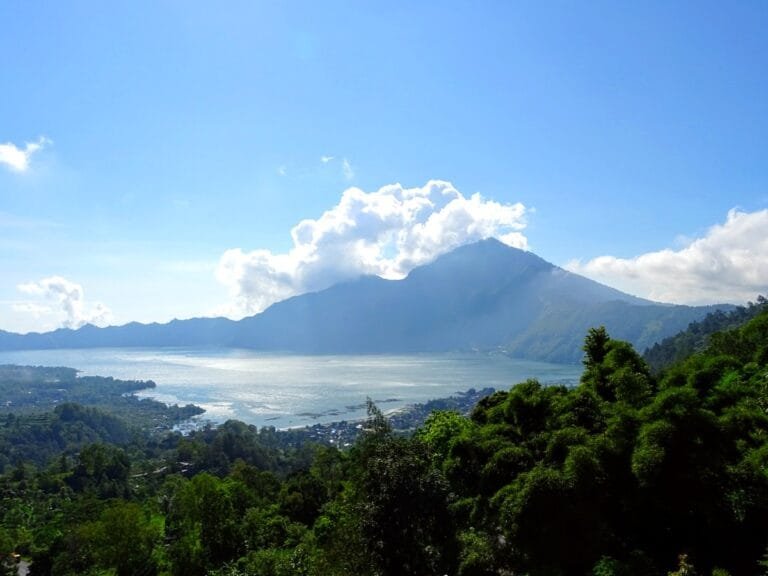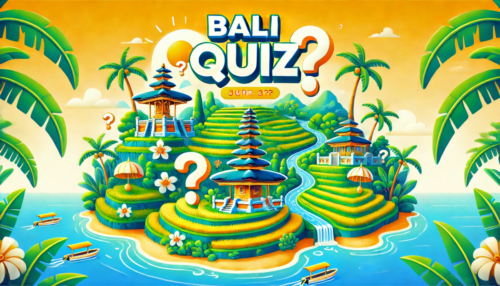A Sunrise Trek to Bali’s Active Volcano
As the sun rises over Bali’s Mount Batur, the sky comes alive in hues of orange and pink—a breathtaking way to start the day and a must-do for adventure seekers in Bali.
–> Book a Hike
Mount Batur (Gunung Batur) is one of Bali’s most iconic volcanoes, offering an exhilarating hiking experience with some of the best views on the island. Located in the Kintamani region, this active volcano stands at 1,717 meters (5,633 feet) and is a favorite among adventurers and nature lovers alike, with most opting for the famous sunrise trek. The early-morning hike to the summit is rewarded with breathtaking views of the sunrise over the caldera, Lake Batur, and the surrounding mountains, making it one of Bali’s must-do activities.
The Significance of Mount Batur
Mount Batur holds deep cultural and spiritual significance for the Balinese people. It is considered a sacred site and plays a central role in many local traditions and rituals. In Balinese Hinduism, Mount Batur is believed to be the home of the goddess Dewi Danu, the goddess of water. The surrounding Lake Batur, Bali’s largest crater lake, is also revered as a vital source of life, feeding irrigation systems that support the island’s rice terraces.
Mount Batur has erupted multiple times in recorded history, with its most significant eruptions occurring in 1917, 1926, and 1963. The volcanic activity has shaped the landscape around Kintamani, creating rich, fertile soil and unique geological formations that make this region a standout for hikers and photographers.
The Sunrise Trek: What to Expect
After sunrise, explore the volcanic crater. Steam rises from the ground, and some tours even offer a unique chance to cook eggs in the volcanic heat—a fun way to experience Mount Batur’s active nature.
Early Start and Guided Hike
Timing: The trek usually begins around 3:00 AM. Headlamps light the way, and a local guide is required due to the steep, rocky trail.
What’s Included: Most tours arrange transportation, guide fees, and a light breakfast at the summit, making the journey hassle-free.
Trail Conditions and Difficulty Level
Trail: The path includes dirt, rocks, and volcanic sand, which can be slippery. It’s a moderate hike but suitable for beginners with a decent fitness level.
Duration: The ascent takes 1.5 to 2 hours, with some steep inclines. Go at your own pace and enjoy the journey up.
At the Summit
Views: You’ll be greeted by panoramic views over Bali’s landscape, with Mount Agung in the distance and, on clear days, glimpses of Lombok’s Mount Rinjani.
Sunrise Magic: As the sun rises, the sky transforms into a stunning palette of colors, making the effort worth it.
Explore the Crater
TIP: Bring warm clothing for the early morning chill, but be ready to peel off layers as the sun rises and temperatures warm up.
Practical Tips for Hiking Mount Batur
- Best Time to Visit: The ideal season is from April to October (dry season), with clear views and stable trails. Avoid the rainy season (November to March), when trails are muddy and slippery.
- What to Bring:
- Headlamp or flashlight
- Comfortable hiking shoes with a good grip
- Warm layers for the chilly summit
- Water (minimum 1 liter)
- Camera or smartphone for the incredible sunrise views
- Snacks, although most tours include breakfast
Preparation Tip: The trek is suitable for most with moderate fitness, but the incline can be challenging. Some light cardio training before your trip, like stair climbing or brisk walking, can help make the hike more enjoyable.
After the Hike: Exploring Kintamani
Cultural Insights: Explore traditional villages like Trunyan and Penelokan to learn about Balinese culture, architecture, and local markets.
Lake Batur
Activity: Take a peaceful boat ride or visit Ulun Danu Batur Temple, a temple dedicated to the goddess Dewi Danu, for a spiritual experience by the lake.
Hot Springs
Relaxation: Soothe sore muscles at Toya Devasya hot springs, where you can enjoy geothermal pools with stunning lake views—a perfect way to unwind after the hike.
Cultural Insights: Explore traditional villages like Trunyan and Penelokan to learn about Balinese culture, architecture, and local markets.












